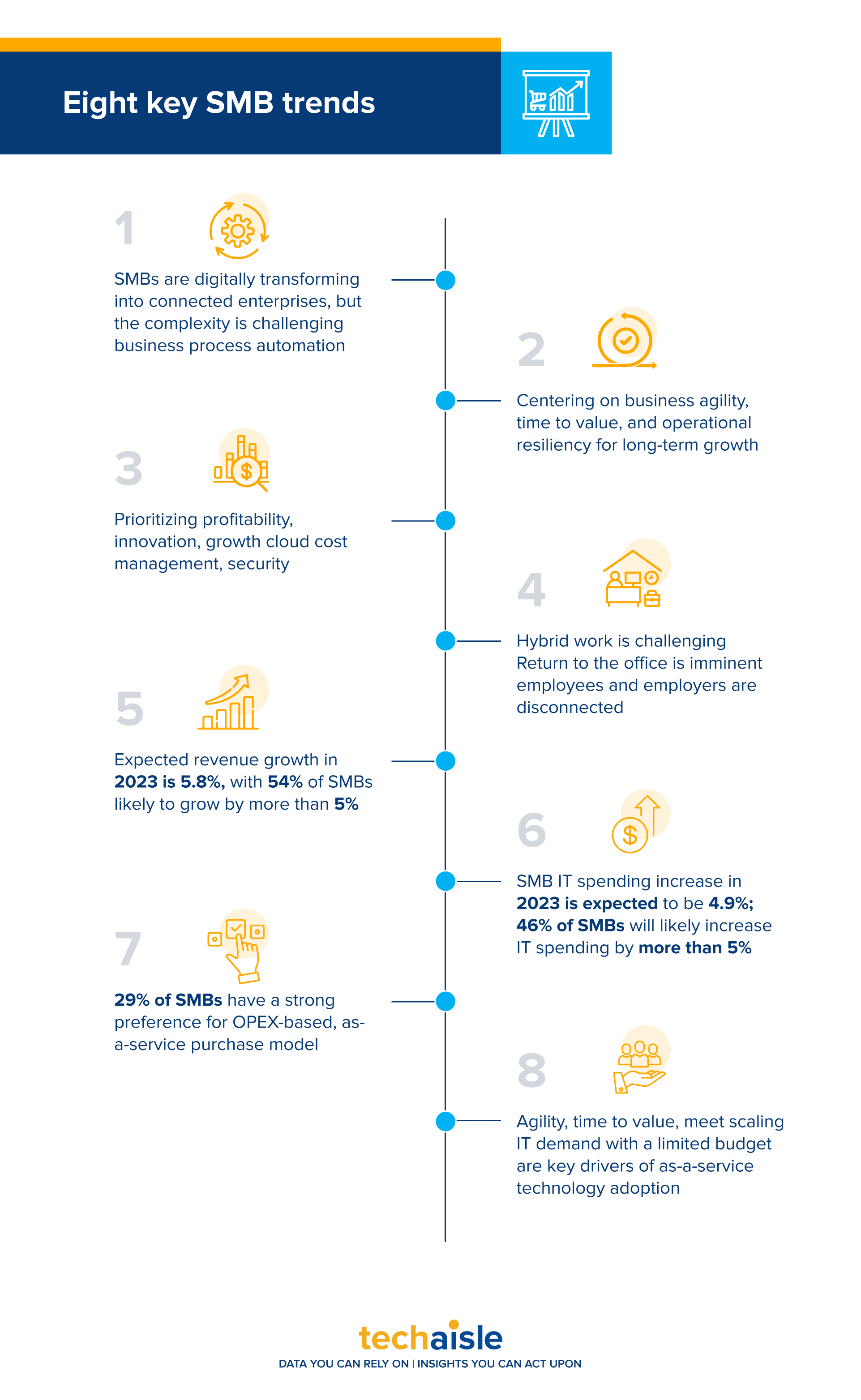Historically, remote work solutions have been the domain of large enterprises equipped with processes and technology resources needed to support workers in the field. However, driven by short- and longer-term factors, flexible work options are now available to employees in businesses of all sizes. Moreover, as social distance health requirements forced the temporary closure of public office spaces, remote work became a matter of survival for many organizations. The pandemic has also crystalized recognition of the productivity benefits of technology-enabled remote work – measured in output rather than hours – which is sure to have a profound and durable impact on workplace behaviors. Today, working from anywhere is the new normal, enabled by powerful communication and collaboration tools, which draw together workers regardless of physical location and are becoming the catalyst for change in large and smaller businesses. What are the primary enablers of this flexible work trend? Data shows a growing commitment to leveraging the power of the cloud and adjacent technologies of mobility, cloud calling, and collaboration - technologies that allow workers and teams to connect, reflect, and share insights and output. Techaisle SMB and Midmarket Hybrid work and collaboration adoption survey, N=1810, shows that:
- 93% of SMBs have prioritized remote and hybrid workplace technology solution adoption
- 58% of employees in the SMB segment are likely to work remotely
- 79% of SMBs are prioritizing cloud-based communication and collaboration solutions which show evolving recognition of the value of cloud calling and collaboration
The simultaneous commitment to cloud calling and collaboration solutions and future planning around a return to the office suggest that something deeper is at play in the SMB communications solution marketplace. Cloud calling and Collaboration are central components of virtually all SMB business activities. The need to communicate anywhere, anytime also means any type of communication and collaboration – synchronous/asynchronous, serendipitous/scheduled, on-the-go/fixed location, within a virtual workspace/within a specific app, with employees/partners/customers. As the lines of demarcation between tasks have been eroded by the increased pace and changing nature of business activities, SMBs have moved past linking discrete actions through linear, sequential processes. Instead, in today's business environment, SMBs interact at all points in the business cycle: in cross-functional planning and management, within a single co-created document, in the stages and connection points defined by their business processes, in delivering better customer experiences, and enabling improved employee productivity.
There is value in adopting unified cloud calling and collaboration. The use of traditional collaboration tools by SMBs is well-established. However, cloud calling solutions are rapidly gaining attention from SMBs. With nearly a hundred percent cloud priority, shifting from on-prem solutions (acquired through CAPEX budget) to cloud-based as-a-service offerings creates a sort of inflection point. As the name implies, cloud calling is cloud-based and available as a subscription. It supports remote work and mobility, provides cash flow predictability, easily integrates within the employees' workspace, and improves IT manageability and efficiency.
A significant collaboration technology shift is SMB's use of a cloud-based communications platform with integrated telephony (audio/video/web conferencing), IM/chat/presence, unified messaging, and mobility. Techaisle data shows that today, just under a third (27%) of SMBs are using integrated solutions, while over a third (35%) plan to adopt the platform in the coming year, a likely adoption growth of over 100%.
The Webex integrated collaboration platform













